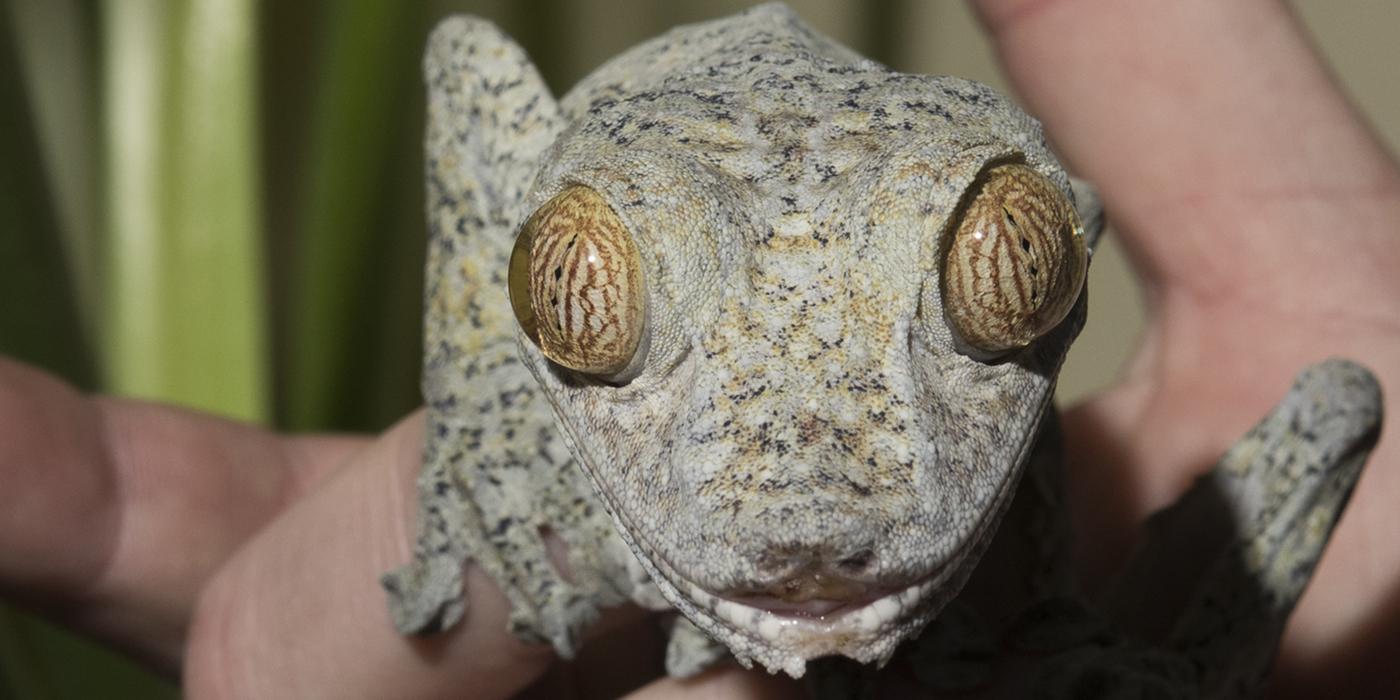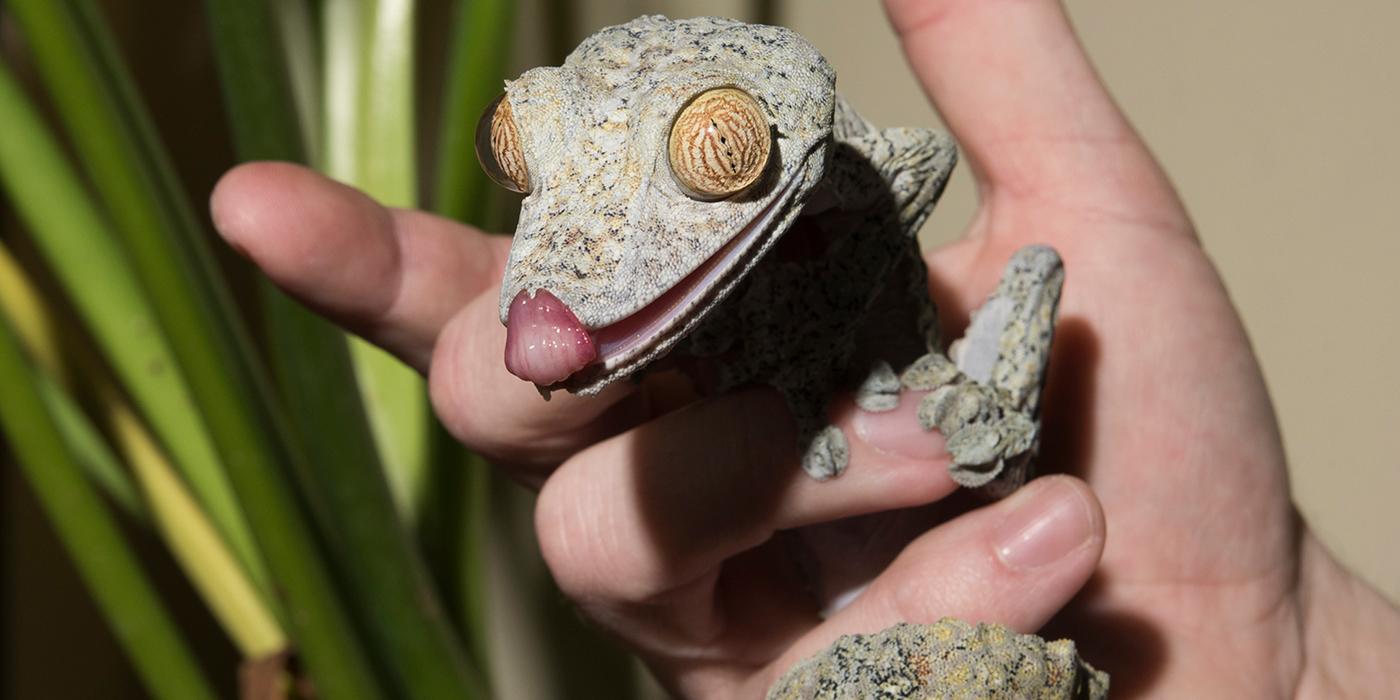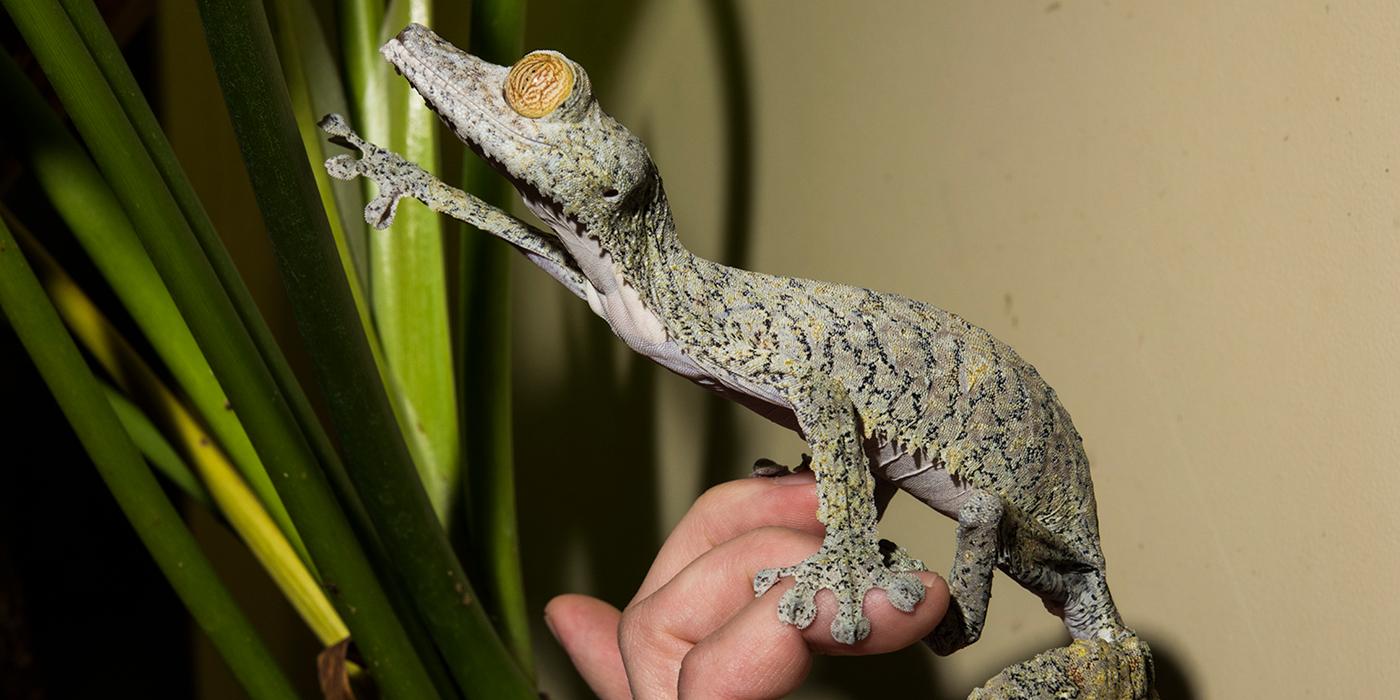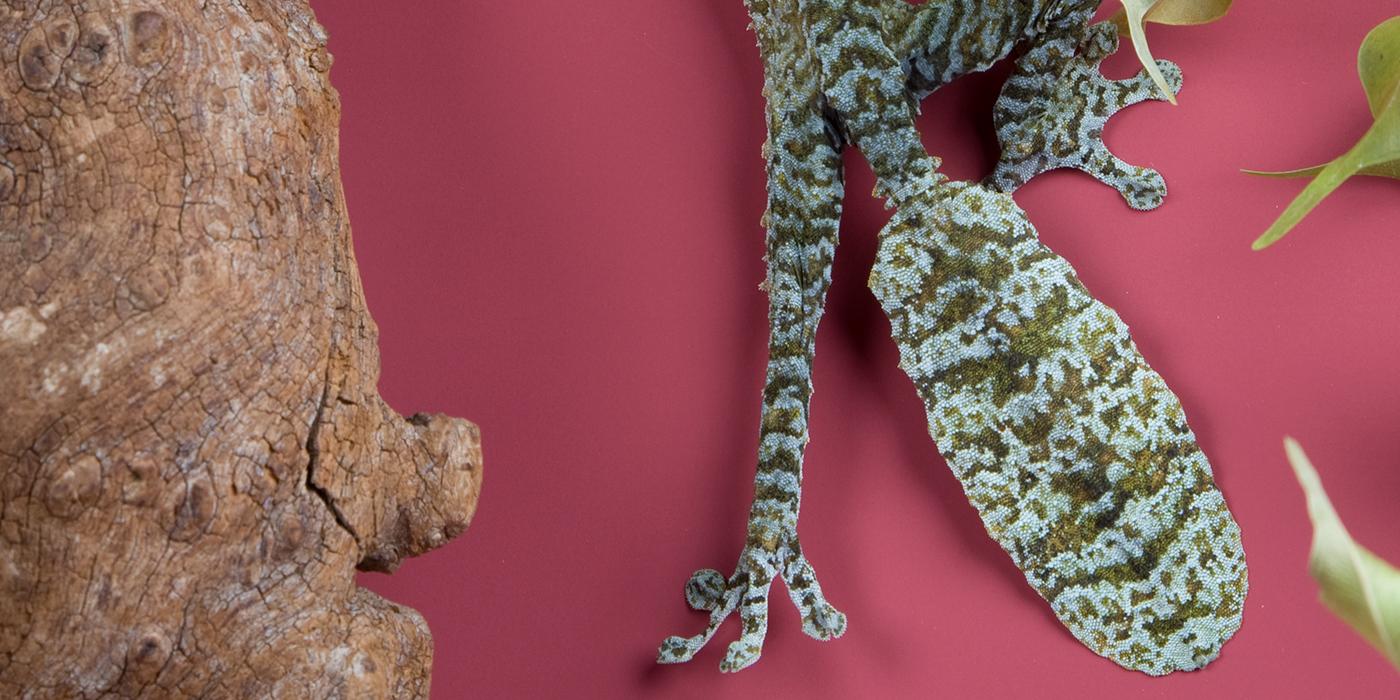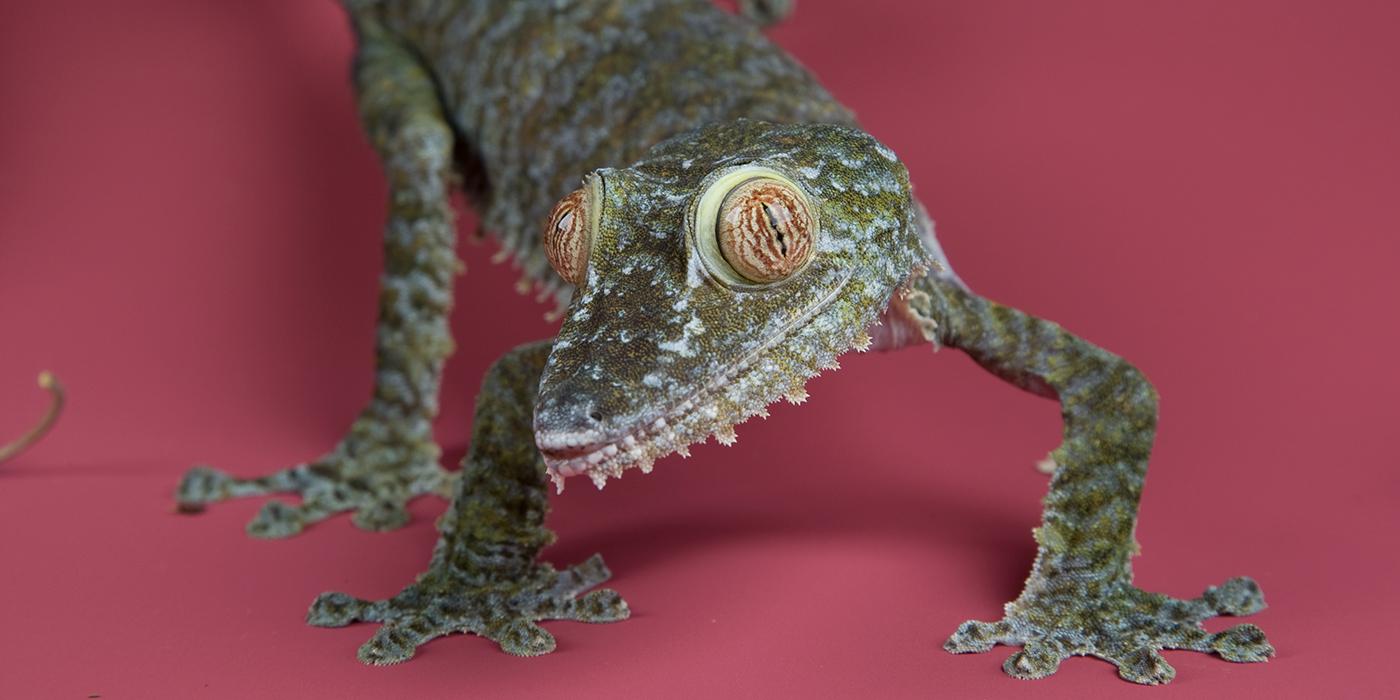Physical Description
Leaf-tailed geckos have long, flat bodies with triangular heads and broad, leaf-like tails. The giant leaf-tailed gecko, or common flat-tailed gecko, is one of the larger species. They have big, marbled eyes with red concentric striations around the pupil set against a background of silver, tan or gold. These lizards have a mottled pattern, with colors varying across species from tans and greens to grays and browns.
They also possess the ability to camouflage with the colors of their environment, as well as the shapes and vegetation of the forests they inhabit. Fringed flaps on their lower jaws and the sides of their bodies flatten against a surface, obscuring their outline. The increased surface area reflects and refracts light, breaking the line between the perimeter of their body and the surface beneath them. With these adaptations, leaf-tailed geckos can almost completely camouflage against dry leaves or the bark of trees.
Native Habitat
Giant leaf-tailed geckos inhabit humid, intact forests in lowlands and at elevations of 800 meters (about 2,625 feet). During the day, branches, tree trunks and leaf litter provide areas of camouflage where the geckos can rest out of sight from predators. They are most commonly seen on the island of Nosy Magabe, which is situated inside a bay in the northeastern reaches of Madagascar. They also inhabit rainforests on Madagascar's eastern coast, though there are no verified accounts of the species existing farther south than the mainland city of Vondrozo.
Communication
Food/Eating Habits
Reproduction and Development
Conservation Efforts
Giant leaf-tailed geckos are considered a species of least concern by the International Union for Conservation of Nature (IUCN), but scientists suspect that their fragmented populations are on the decline.
Their expected range of occurrence in Madagascar, which is approximately comparable to the size of Maine (88,391 square kilometers), does not match the available forest habitat, which collectively is an area about the size of Delaware (7,500 square kilometers). With no room for expansion, island ecosystems are fragile and animals within that ecosystem are highly susceptible to impact from human activities, including habitat destruction and fragmentation. Even within some protected areas, populations have declined or disappeared.
Madagascar's forests used to span the entire island but now only cover 16 percent, with 40 percent of that reduction taking place since the 1950s. The local human population is rapidly increasing but severely impoverished, and only 6 percent of the land is suitable for cultivation. A military coup in 2009 led to the loosening of regulations for extraction of precious woods from protected areas. The global demand for forest resources, agricultural products, timber and wildlife for the pet trade further drives the degradation and clearing of forest lands. The broader economic, social and political issues of the country ultimately affect leaf-tailed geckos, as these animals depend and rely on intact forest for survival.
Local Use of Forests
Local populations use slash-and-burn agriculture to clear tracts of forest. While this is an inexpensive means of clearing land, it is not contained or regulated for moderating measures. This results in the augmented clearing of forest areas and potential damage to the little arable land that remains. This clearing is more pronounced in lowland areas that coincide with the giant leaf-tailed gecko's range.
Logging
Logging at a high intensity, or cutting down all of the trees in a specific area, reduces the availability of trees that the giant leaf-tailed gecko relies on for cover, protection and locating food. Logging at a lesser intensity, leaving some trees intact, can help this species survive. However, in most cases, logging in Madagascar is not moderated for sustainability of the forest and results in total clearings of patches of forest. Illegal logging, especially since 2009, also impacts Madagascar's forest areas, including those in which leaf-tailed geckos are found.
Pet Trade
Giant leaf-tailed geckos are traded internationally for use in the pet trade. This trade is controlled by CITES Appendix II, which recently reduced its quota for exported individuals from 2,000 to 300 per year. The impact of illegal trade on this species is unknown, though it is not suspected to pose a serious threat.
Help this Species
Reduce, reuse and recycle — in that order! Cut back on single-use goods, and find creative ways to reuse products at the end of their life cycle. Choose recycling over trash when possible.
Choose your pets wisely, and do your research before bringing an animal home. Exotic animals don’t always make great pets. Many require special care and live for a long time. Tropical reptiles and small mammals are often traded internationally and may be victims of the illegal pet trade. Never release animals that have been kept as pets into the wild.
Share the story of this animal with others. Simply raising awareness about this species can contribute to its overall protection.
Smithsonian's National Zoo and Conservation Biology Institute. (n.d.). Giant leaf-tailed gecko. Retrieved October 17, 2025, from https://nationalzoo.si.edu/animals/giant-leaf-tailed-gecko
Animal News

7 Spooktacular Animal Facts for Halloween ›

Meet the Orangutans Living at the Smithsonian’s National Zoo ›

